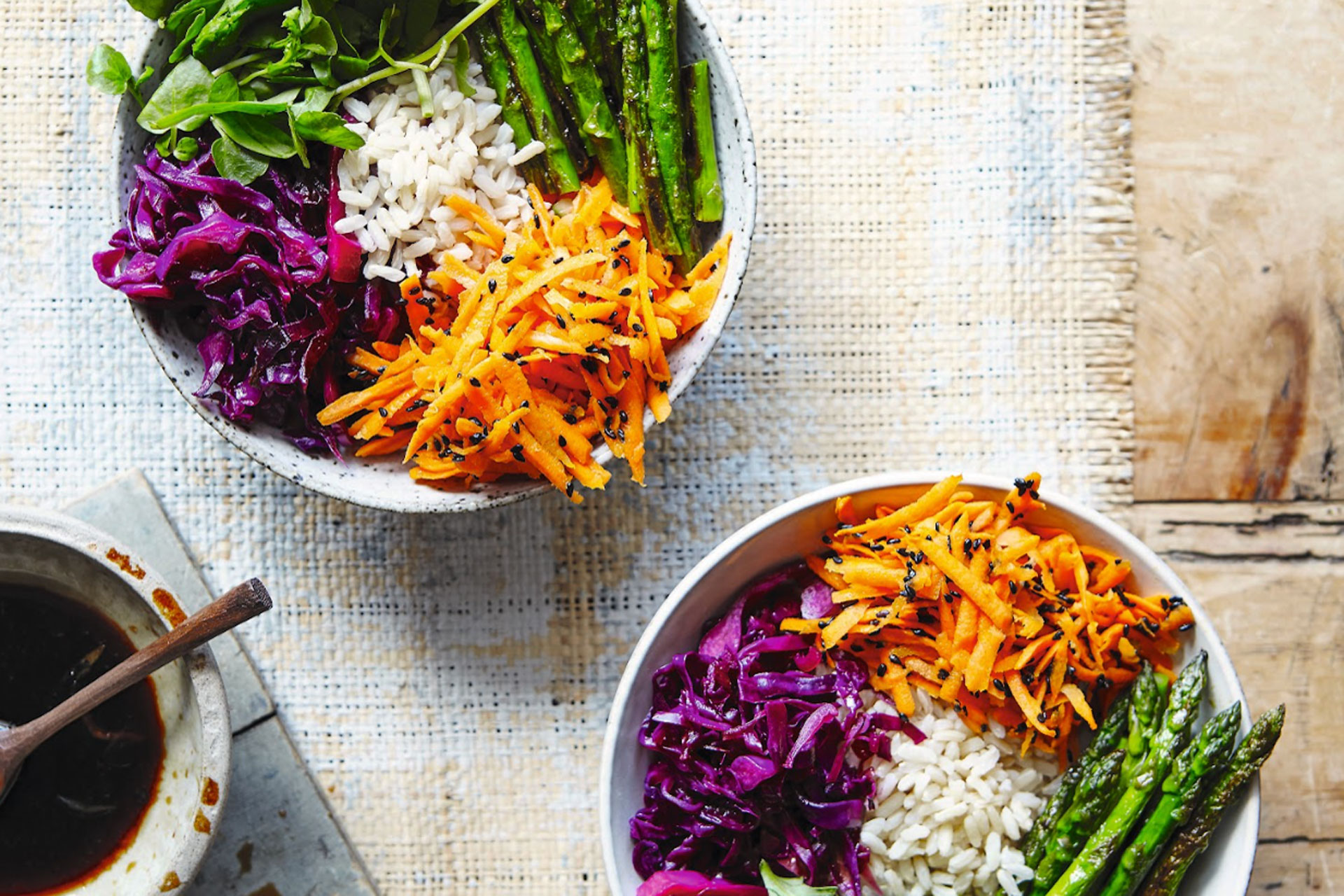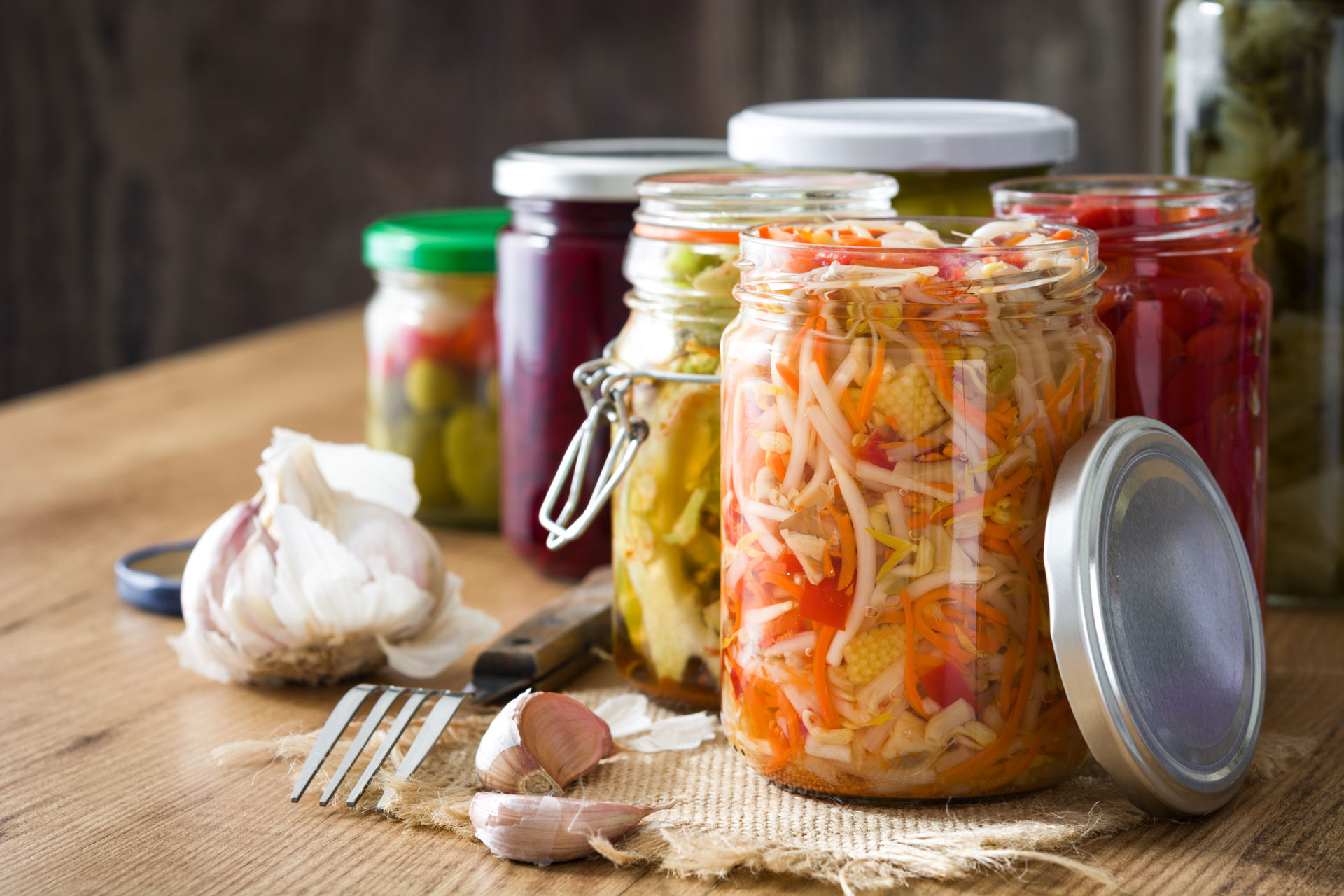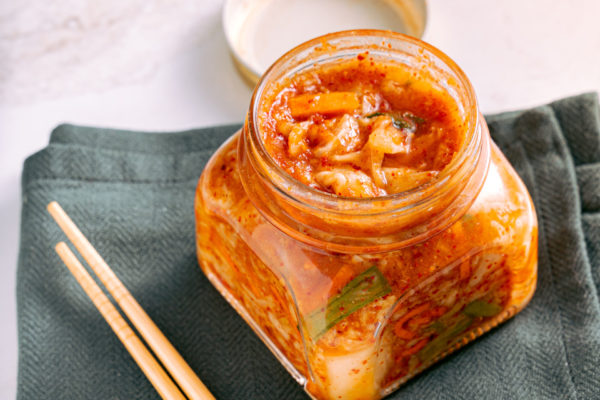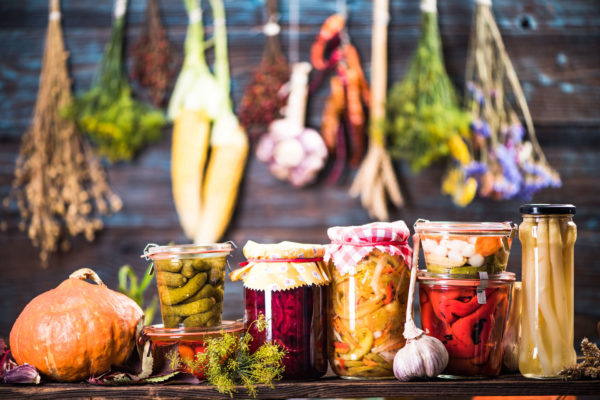Ingredient of the Week: Kimchi
By
1 year ago
How to make your own fermented dish

Each week plant-based cook Bettina Campolucci Bordi, founder of Bettina’s Kitchen, gives us the lowdown on a particular food, offering cooking tips and a recipe. This week it’s kimchi: an ingredient that’s been in the news this week following a Korean study which suggests eating it daily may prevent weight gain. Here’s a bit of background on the buzzy fermented food, plus Bettina’s favourite recipe.
Kimchi: Benefits & Recipe
I travelled to South Korea for the first time about 15 years ago – my best friend Soljee lives in Seoul. Very early on I loved Korean food, dishes, fashion and, yes, K-pop before it became a thing here. We frequently dreamt of opening up a matcha cafe – and had we gone ahead, it would have been way ahead of its time. In any case, let’s talk about kimchi and the hundreds of varieties of it.
What is Kimchi?
Kimchi is a traditional Korean side dish of salted and fermented vegetables, such as napa cabbage and Korean radish. A wide selection of seasonings are used, including gochugaru, spring onions, garlic, ginger, and many other ingredients. Kimchi is also used in a variety of soups and stews.
In modern day Korea, there are about 200 different varieties and they all have their unique twist in regards to the flavour. You can see kimchi even being incorporated into different foods such as burgers and pizzas. If you are in Korea, it will be something that you will frequently come across.
Kimchi is a Korean word which has its roots in the ancient form of the language, starting out as chimchae, with the literal meaning of ‘soaked vegetables’. This was later modified to jimchi en route to the current form kimchi, with kimchee and gimchi as common variants in spelling.
There are many ways of making kimchi and I had the great honour of making some with my friends’ whole family. Traditionally kimchi is not plant-based so I have come up with my own recipe that is super simple yet can be made wherever in the world you are. If you have access to (Gojujaru) Korean chilli then this can be added too, but it is not necessary for my version.

Getty Images
How Long Does Kimchi Last?
Kept at room temperature, kimchi lasts one week after opening. In the refrigerator, it stays fresh much longer, about three to six months and continues to ferment, which may lead to a sour taste. Be sure to refrigerate your kimchi at or below (4°C), as warmer temperatures may accelerate spoilage.
Recipe: Soljee’s Kimchi
Korea has hundreds of versions of this dish. Kimchi is a fermented cabbage or vegetable that is traditionally flavoured with many ingredients. This is my simple plant-based version that has a kick. You can vary how much garlic, chilli and ginger are added. I personally prefer my kimchi more gingery than garlicky.
Ingredients:
Makes 1 x small or medium jar (depending on the size of your cabbage)
- 1 tablespoon salt
- 1/2 head green cabbage, thinly sliced
- 1/4 head red cabbage, thinly sliced
- 1 carrot, finely chopped lengthwise
- 1/2 red (bell) pepper, finely chopped lengthways
For the flavouring paste
- 1/2 red (bell) pepper, deseeded and chopped
- 1 tablespoon minced ginger
- 1/2 tablespoon minced garlic
- 1 green spring onion (scallion)
- 1 red chilli
- Pinch of pink Himalayan salt
Method:
- Massage the salt into the cabbage slices until they start releasing liquid. This liquid is what you will eventually be using as your brine to ferment the kimchi. Flavouring paste in a blender or using a pestle and mortar, combine all the flavouring ingredients into a paste.
- Check on your massaged cabbage and make sure you have released enough liquid. Gently massage the paste into the cabbage, chop finely, add the carrot and pepper and transfer to a clean, large glass jar with a lid.
- Make sure you press the cabbage into the jar properly so that it is covered by the cabbage liquid. It is very important that all the veggies are covered with a sufficient amount of brine and pressed down properly.
- Leave the jar to sit at room temperature for at least 2–3 days, opening up and ‘burping’ the kimchi at least once a day. After 2–3 days, the kimchi is ready to eat and can be refrigerated until needed. The fermentation will still continue in the fridge but at a much slower rate.
- Always use clean utensils when dipping into kimchi to avoid spoilage.
- The longer the kimchi sits and ferments, the more flavourful it becomes.






